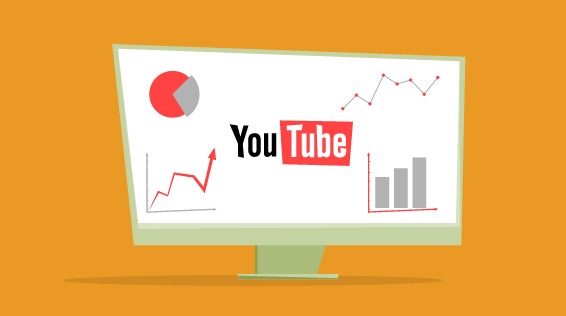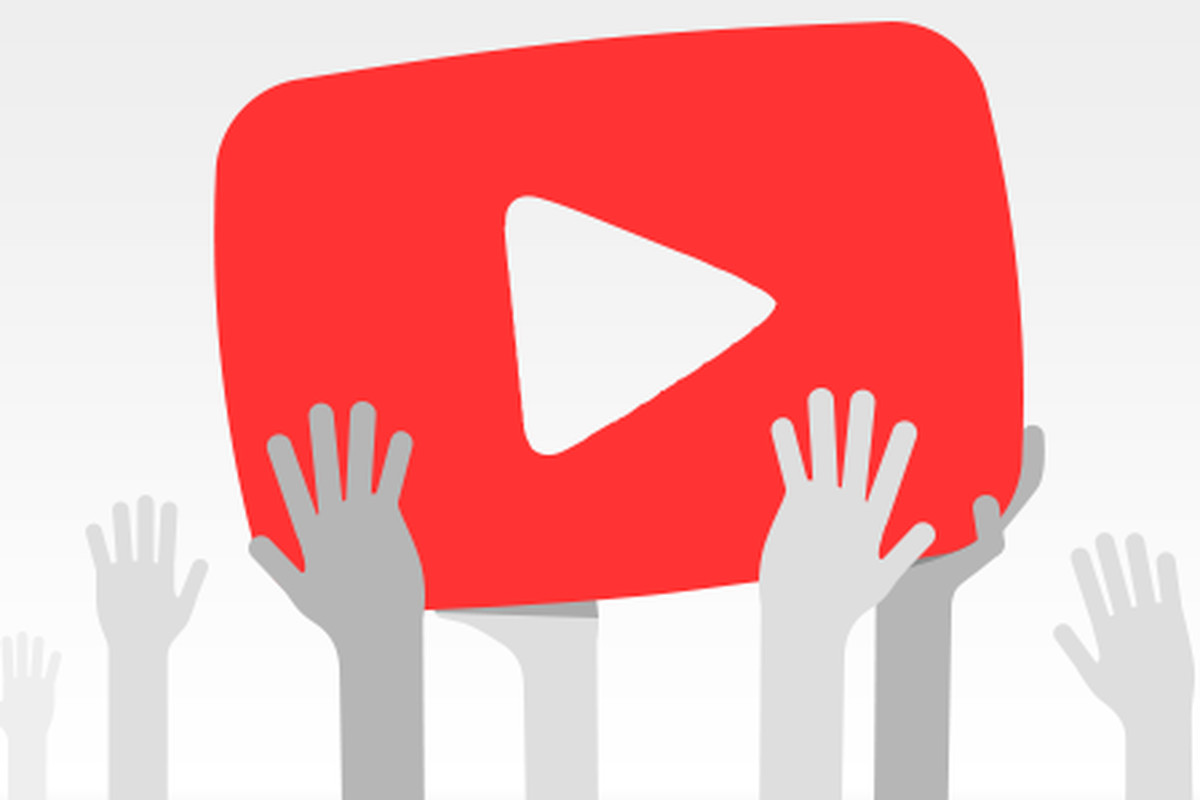
In the present era, YouTube has been the subject of relentless backlash from lesser-known creators next to the company’s decision to change how monetization mechanism on the platform, but it’s important to note that these changes were inevitable and necessary.
YouTube’s new monetization guidelines will affect smaller creators the most. The updated rules state that in order for makers to be eligible for the Partner Program, a shared whose channels can be monetized over Google AdSense, they need to have a total watch time of 4,000 hours in the past 12 months and a minimum of 1,000 subscribers.
This YouTube guideline is the main departure from the program’s earlier policy, which only essential channels to have 10,000-lifetime views. In a blog post, YouTube administrators acknowledged that life would change for an important number of channels under the new system. The company attempted to defend its choice by noting that “99% of those affected were creation less than $100 per year in the last year and you will surprise to know that with 90% earning less than $2.50 in the last month.”
 The reaction from who YouTuber starter and also from who has a small channel was instant and unforgiving. The criticism varied among creators: While some were concerned about their YouTube channel’s revenue drying up and others sensed like they were being excluded from the greater YouTube community. A rapid glance at Reddit, Twitter, and, of course, YouTube will validate just how upset people are with YouTube’s renovation of the Partner Program.
The reaction from who YouTuber starter and also from who has a small channel was instant and unforgiving. The criticism varied among creators: While some were concerned about their YouTube channel’s revenue drying up and others sensed like they were being excluded from the greater YouTube community. A rapid glance at Reddit, Twitter, and, of course, YouTube will validate just how upset people are with YouTube’s renovation of the Partner Program.
While we understand with those smaller YouTube video creators trying to find their way on the big platform, and their valid criticism, we also realize why YouTube has to make such extreme changes.
YOUTUBE HAS SUFFERED SERIOUS BLOWS FOR MONTHS
For more than a year YouTube was struggling to swim to the surface and breathe.
The controversies about all policies have come month after month after month, with blames flying at the company from every position. In last of 2017, it appeared like promoters couldn’t trust anymore YouTube to properly filter which makers were receiving ads on their videos; creators couldn’t trust YouTube to fix monetization problems in a timely manner, and media outlets were having a field day with offenses by some of the company’s most notorious faces.
We called YouTube the biggest dissatisfaction of 2017 earlier this month:
We think if YouTube does not want to teeter off the edge into a despairing hell in 2018, the company needs to put us, its audiences, and its best makers, first again. Working to fix all that’s broken may seem like a difficult task, but it’s the only way to remain.
While YouTube’s recent actions may seem to be doing the opposite of that, it’s the smoothest move the YouTube Company could make to protect both itself and the site as well. Advertisers are at the top of the ecosystem, not creators. YouTube relies on ad revenue to pay video makers, help YouTube Red projects (along with paid subscriptions), and pay the engineers and coders who run the website itself. YouTube is not for video service; it’s an advertising and promotion platform. It’s much cooler to find more content creators than it is to woo new promoters.
And advertisers will finally stop spending money on YouTube if they feel they cannot trust YouTube. Top video creators who use YouTube as the main source of their income would then be forced to leave the platform for competitors with a tougher advertising presence, or drastically lower their production. With no top Video creators — which also means no brand relationship, and no advertising coming in — YouTube becomes a platform and archive of video content that the audience can use, but no one can shape a career on.
The term “professional and full-time YouTuber,” anyone who is known by status on the platform and their related channel, efficiently dies in this scenario. YouTube as we recognize it would look radically altered. It might even look like a simpler time when YouTube first launched and the focus was on the videos on the website, not the characters that created those videos.
THE WHOLE THING IN MODERATION
YouTube is trying to do what it has necessary to do for years: moderate. Although the YouTube Company won’t be able to check every single video uploaded to the platform, it’s going to start presenting strong moderation tools that will help organizers feel safer about where their ads lie.
Any video that goes through Google Favoured, an organization that pairs top-tier ads with major creators’ videos, will now be watched by a human before advertising is approved. This screening process should prevent offensive content, like Logan Paul’s provocative video containing footage of a dead body, from existence monetized.
By cutting off the sea of YouTube channels that YouTube may not have been able to retain a human eye on, the company will also confirm that it can try to gauge what content is getting placement for advertisers. This move is just triage; it won’t solve the problem forever, but it will patch just enough injuries to keep the body alive while the company investigates a better solution.
YouTube is also giving promoters more control over which channels get certain ads placed. This allows the company to work with both creators in the Partner Program and advertisers to keep a better eye on content before it gets promoted.
The company is repairing holes as quickly and successfully as it can, trying to save as various YouTube Videos creators as possible while working on fixing the bigger picture overall: safety. YouTube is not safe for advertisers and even some users. Presenting some moderation to the platform, plus an improved vetting process is the only viable move right now. Its bad news for a lot of video content makers, but YouTube has to look next to the advertisers if it wants to continue and turn a profit.
But that’s not where all things end.
NOW THE TIME THEN YOUTUBE NEEDS TO WORRY ABOUT ITS AUDIENCE
This is the most vital part of the equation: viewers. YouTube has billions of viewers across the world tuning in daily to watch a variety of videos — billions of hours’ value every day.

In the past few years, YouTube had to struggle with bad press resulting from violent videos plaguing the website, disturbing content targeted at children, and violent and from time to time lethal prank videos went wrong. These videos made headlines, but not earlier they were seen by millions of people, including children. All came to a head in initial January after one of YouTube’s most popular creators, Logan Paul, uploaded a video that included footage of a man who appeared to have in recent times taken his own life.
After all of the events that YouTube pledged to tool — after all its promises in late 2017 to advertisers, parental watchdog groups, reporters, and a wave of critics — here was the company’s golden boy endorsing the insensitive, unsettling and disgusting content.
It seemed like; once again, YouTube was all talk. The company was letting its platform dissolve into a corrupt, unhinged, anything-goes place. More highly, it was becoming an unhealthy, unhinged place where bad actors were receiving payment for their work.
But these new guidelines will give YouTube room to clear up what it proposes to audiences. With a moderation team of 10,000 people, more control over the YouTube videos that are being helped, and more human oversight over top creators’ videos, it’s almost like YouTube is beginning to cater toward its largest audience. While niche channels will still trust on searches and recommended algorithms, the trending page and front page of YouTube may appear a little cleaner than they’ve been in few months.
STOPPING THE COLLAPSE
YouTube’s recent decisions regarding monetization are very tough, and they’re going to affect many video creators. Some long-time YouTube’s, video makers who have been uploading videos for a period, aren’t sympathetic to their plight. They’re noting that they weren’t paid at all for the first few years they were on the platform. Other critics have pointed out that YouTube was never supposed to be a viable career option for people, that it only became one in recent years.
All those facts are valid, but they miss the core worry among newer creators who are concerned they will no longer be a part of the YouTube community they felt they belonged to. YouTube is also aware of this. The company is working on ways to allow new video creators to link out to exterior projects or websites in end slates on videotapes. There’s no reason to believe YouTube won’t adjust how monetization works in the upcoming days, either, once things settle down and teams have a better grasp on fixative their very broken platform. This will be particularly true for animators and other creators who upload rarer videos because they’re more complex and don’t meet YouTube’s demand for watch time.
Small YouTubers who create video content on a constant basis should be paid for their work, and should not have to worry about what trend YouTube is presently focusing on. But we also support YouTube’s decision to step back and say, we are in a state of crisis and we need to think about how we’re going to work with advertisers and makers, so we’re closing the entrances for a while.
YouTube has been on the edge of collapsing for months, trying to figure out how to work with the faces of the platform — or distance itself from those people, if essential — and with promoters, who help to keep YouTube and its community floating. There isn’t any more time for experimentation. Advertisers won’t stand for it and critics won’t stand for it, and even top makers are going to finally look into other venues.
YouTube is being complete, undoubtedly selfish by defensive its advertisers, trying to clean up its content and prevent another monstrous screw-up by one of its makers from making worldwide headlines. Right now, YouTube needs to be selfish.
YouTube needs to not only continue, but thrive in this increasing market of competitive platforms, emerging services that are circling YouTube’s bleeding wounds like hungry sharks. The YouTube Company is in self-heal mode, and we should let it take some time to figure it all out — for the betterment of YouTube as a company, as a platform, and as a place makers want to be.
Related Post: HOW TO DEAL WITH NEGATIVE ONLINE REPUTATION MANAGEMENT?

